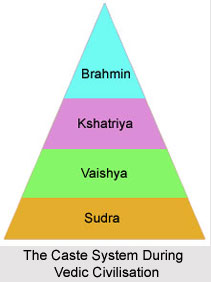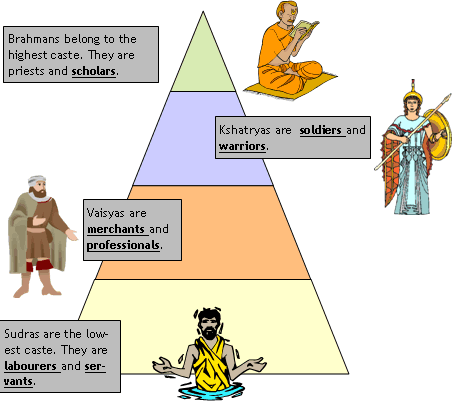Research article written by London Swaminathan
Post No. 1148; 4th July 2014.
Caste divisions existed in ancient Tamil Nadu like other parts of India. Tamils were divided on the basis of four castes and on the basis of work they did. There were references about ‘high born’ and ‘low born’ in the Sangam Tamil Literature.
There were mentions about four types of soldiers: Chariot, Elephant Brigade, Cavalry and Foot soldiers (Ratha,Gaja,Thuraga,Pathathi) as well. When we look at the whole picture with such divisions of castes, soldiers, Eight Types of Marriages, Nava Rasa, Six Seasons and so on in the Sangam literature, we have to accept that there was no difference between Tamils and other communities 2000 years ago.
There was a mischievous propaganda by people with vested interests that all these divisions were “imported” from the “Aryan North” into Tamil Nadu. But great saints like Kanchi Paramacharya, Aurobindo and great Tamil scholars like U V Saminathaiyer have pointed out that pure Tamil words coined from Tamil roots were used for Yaga, Veda and Castes from the days of the oldest Tamil book Tolkappaiam. It shows that they were part and parcel of Tamil society and nothing was brought into Tamil Nadu from outside.
The surprising thing about the ancient Tamil community of Sangam period is each of the five landscape divisions had Upper Castes and Lower castes. Even the poets of Sangam and Post Sangam period did not hesitate to call them “Hey, Ye Low Born!”
Following are the five landscape divisions according to ancient commentators:
1.Kurinchi (Mountainous Areas)
Higher castes: Poruppan, Verpan, Silamban, Kodichy
Lower castes: Kuravar, Kurathiyar, Kanavar
2.Mullai (Forest regions)
Higher castes: Nadan, Thonral, Manaivi, Kizathi
Lower castes: Idaiyar, Idaichiyar, Ayar, Aychiyar
3.Marutam (Countryside
Higher castes:Uran, Makiznan, Manaivi, Kizathi
Lower castes: uzavar, Uzaththiyar, Kadaiyar, Kadaichiyar
4.Neytal (Seashore)
Higher castes:Serppan, Thuraivan, Pulamban, Parathi, Nulaichi
Lower castes: Nulaiyar, Nulaichiyar, Parathar, Parathiar, Alavar, Alathiyar
5.Palai (Wasteland/arid lands)
Higher castes:Vidalai, Igulai, Meeli, Eyitri
Lower castes:Maravar, Eyinar, Eyitriar, Marathiyar
Nobody now knows what these caste names meant. We have explanations for some words.
Foreign “scholars” have mischievously deleted them from the table of Five Landscapes in English books. They have mentioned only such things that suited their wishful thinking. But the ancient list is still available in all the old Tamil commentaries. Old Tamil commentators have clearly mentioned them as “low and high” castes and explained them in their commentaries.
There are many more names like Kuyavar,Kollan, Thachan, Kuthan,Vanikan which are based on the work they did. But Tamils did not hesitate to use Sanskrit words such as Thachan, Vanikan etc.
The word for Brahmin occurs in hundreds of places with different epithets. Brahmins had the highest number of references. Too many to list here! (I have given in my post “No Brahmin! No Tamil!!” all the contributions made by great Brahmin poets like Kabilar, Paranar, Nakkirar and Mamulanar.

Caste System in the Mayan Civilization of South America.
Manu Sloka in Purananauru!!
Pandya King Nedunchezian has composed a beautiful (Purananuru 183) verse about the value of education 2000 years ago. He says even if a person of the lowest caste among the four castes is educated, the high caste person would salute (pay respects to) him. Even a mother would show more affection towards the educated son than the illiterate one.
Manu said the same in the Manu Smriti:–
“A man who has faith may receive good learning even from a man who is lower, the ultimate law even from a man of the lowest castes, and a jewel of a woman even from a bad family”–2-239
“Ambrosia may be extracted even from poison,
And good advice even from a child,
Good behaviour even from enemy
And gold even from something impure “– 2-240
“Women, jewels, learning, law, purification, good advice and various crafts may be acquired from anybody” – 2-241
“In extremity, it is permissible to learn Veda from someone who is not a priest and to walk behind him and obey him like a Guru as long as the instruction lasts”- 2-242
Tiruvalluvar also said the same in Tamil Veda Tirukkural (409)
“Though high born, an unlettered man is deemed lower than a learned man of lower birth. “—Kural 409.
During Krita Yuga (Golden Age), there was only one caste i.e. Brahmins, according to Santi Parva chapter 186 of Mahabharata.
Non Hindu foreign “scholars” deliberately spread a lie that Shudras are non-Aryans. But Vedas clearly say that they are part of the same Mahapurusha in the Purushasuktam of Rig Veda.
Chanakya of Arthashastra (3rd century BCE) treats all the four Varna as Aryans (not a word with racial meaning as foreigners used, but meaning ‘cultured’).
Those who read Rig Veda, Manu and Arthashastra would know that all the four castes were part of one community. Untouchability and modern caste differences were unknown in the Vedic period.
Caste System in Egyptian Civilization.
Hey! Ye Low Born! In Purananuru
Tudiyan caste is addressed as low born (Izisina in Tamil) in the verses 82 and 287 of Purananuru by poet Sathanthaiyar.
Poet Damodaran of verse 170 and Kazathalaiyar of verse 289 also used this word “low born” (Izisina).
Mangudi Kizar of verse 335 mentioned all the four lower castes :Tudiyam Panan, Paraiyan and Kadampan.
Lowest caste Pulaiyas did all the works at crematorium, according to verse 360.
Since Purananuru is considered the oldest section in the Sangam literature, I have quoted above verses from the same. Other sections of Sangam literature have a lot of references. Silappadikarm, Tamil epic of fifth century CE, mentioned the caste system and in which part of the city each and every caste lived etc.
In short it was the same caste system throughout India. But no one was discriminated against on the basis of caste in Tamil Nadu. In a vast geographical region each and every community lived in their own sphere happily with all the basic needs like food, shelter and clothing. If at all there was poverty, it had nothing to do with the caste system.
Oldest Tamil book Tolkappaiam also refer to the caste system in several places.
The word “Four Varna” is used in Tamil epic Silappadikaram: 6-164, 14-183, 14-212, 22-10; Manimekalai 6-56.
Silappadikaram 8-41 used the word “Jathi” (Saathi).
Words Varna and Jathi are used in Silappadikaram for the first time.
Maduraikanchi of Sangam Literature mentioned the “four different streets” for four different castes.
Brahmin streets known as Agraharam existed till 75 years ago in Tamil Nadu. Brahmins only lived in that area. Whole villages given to Brahmins by the kings were mentioned in thousands of Tamil inscriptions.
Some people who study the constructions and structures in the Indus Valley Cities believe that the caste system originated there. It is debatable.
Contact swami_48@yahoo.com




ellalansite
/ February 13, 2017The names mentioned under the geographical divisions may be designations by nature of work, not necessarily hereditary caste. That is there everywhere, even within a house/family of a caste, everyone is not treated the same. And in offices today, we have higher designated person irrespective of caste and lower designations irrespective of caste. Whatever it is, Brahmins were not the highest caste in Sangam period. There were and still today different racial groups among the populace (Caucasoid, Veddoid, or some other unknown). The different castes could have belonged to different races as even today we can see the physical/appearance/DNA differences (not talking about the colour which is caused by climate) to a considerable extent. So, a king saw that among such diversity, there must be some common place of worship to unite and so they built temples. And to do the priestly jobs there, they could not appoint randomly any one set from the population as other groups may oppose. So they had to bring some neutral third party person from foreign land (Brahmins) or may be a minority from the populace like a theory of caste valluvar as a political move. The Sivachariyas themselves mention Cholan kings brought them from Bengal. But after the fall of kings, it happened to take a different angle with even the genetical descendants of the kings who brought Brahmins faced untouchability. So, there is nothing superior about Brahmanism, if at all there is, that may be political too even today.